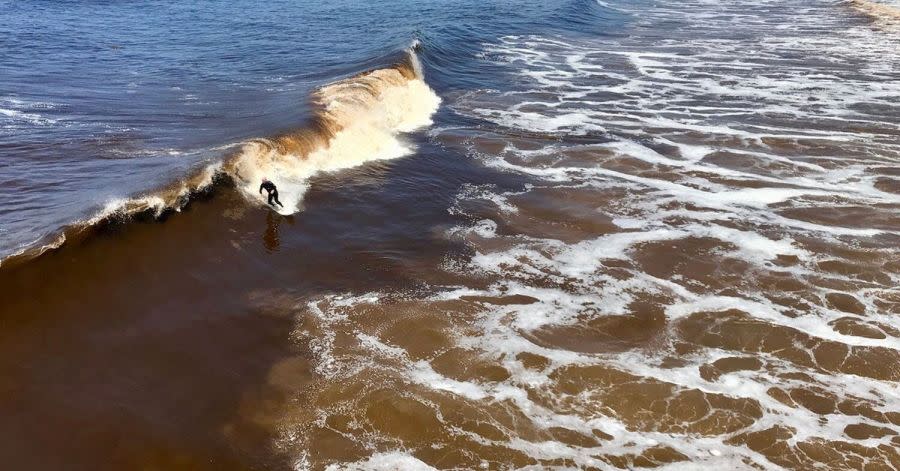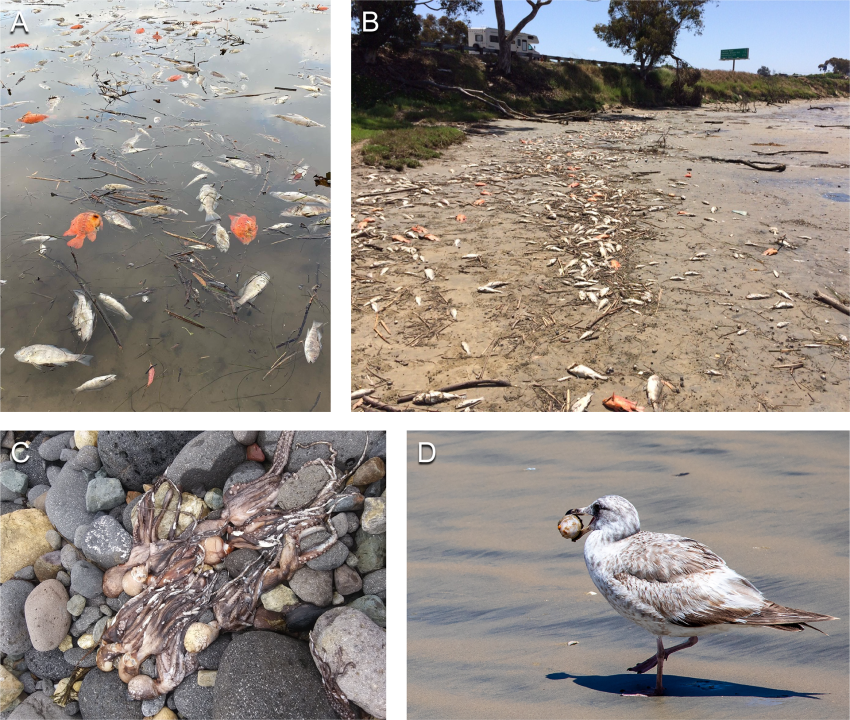New study details downside of bioluminescence along SoCal coast

SAN DIEGO (FOX 5/KUSI) — Southern California’s bioluminescence events are sights many nighttime beachgoers have on their bucket list. The dazzling, iridescent spectacle is a once-in-a-lifetime experience for those who are able to spot it.
However, a new study from UC San Diego’s Scripps Institution of Oceanography and the National Oceanic and Atmospheric Administration (NOAA) explains that this display can come at a cost: mass mortality among fish and other marine organisms.
The study specifically focused on the ecological impact of a particularly incredible bioluminescence event caused by a historic “red tide” event that occurred in the spring of 2020. Red tides describe a bloom of microscopic organisms, like algae or plankton, in the water.
WATCH: Bioluminescent waves crash at Torrey Pines Beach
The phenomenon created some of the most widespread, electric blue waves ever seen in recent years. So, researchers with Scripps and NOAA jumped at the opportunity to better understand red tides, leading them to the findings that were published in March in the journal, Elementa.
“Red tides are notoriously difficult to predict and study, so the 2020 event presented a unique opportunity for the marine science community,” said lead author Zachary Skelton, a marine biologist under contract at NOAA’s Southwest Fisheries Science Center.
Using sensor data along the coast, long-term observation programs, field surveys and case studies from local aquariums, the researchers found a correlation between the dynamics that led to the red tide, extreme changes in water conditions and mass mortality of certain marine species.
During the tide, researchers observed instances of extreme hypoxic, or low oxygen, and hyperoxic, or excess oxygen, conditions along the coast, as well as swings in pH levels.
According to the study, these changes were caused by the bloom’s behavior: The microorganisms photosynthesize during the day, taking up carbon dioxide to produce oxygen, before switching at night to using oxygen and producing carbon dioxide.
At peak bloom, researchers observed conditions that were often hyperoxic for longer periods due to the increased oxygen in the water. When the bloom began to decline, oxygen levels reduced, contributing to to prolonged hypoxic conditions.
For marine life, these changes in seawater chemistry during the red tide severely impacted health, leading to mass die-offs in numerous coastal species between April and mid-May 2020.
This was particularly acute in estuaries and near-shore coastal environments. At the Scripps Pier in La Jolla, for instance, intermittent hypoxia was recorded for a total of 82 hours between April 30 and May 16, 2020, according to researchers.
“You often see fish die-offs happening in estuaries, or in warm water areas like Florida,” said Skelton. “But open-ocean mortality associated with these hypoxic events is pretty rare in California, so the Scripps sensor provided some unique insight into that event.”
Enclosed coastal areas in San Diego County like the La Jolla Cove and the Agua Hedionda Lagoon in Carlsbad also saw higher rates of mortality. Researchers said this occurred, in part, because these areas don’t see as much flushing or movement of water compared to the open ocean — factors that allow the algae driving the red tide to bloom in higher concentrations.
Incredibly rare white killer whale spotted off Southern California coast
Similarly, species that tend to be less mobile, such as nearshore and bottom-dwelling creatures, fared the worst in the 2020 red tide.
Researchers found that the spotted sand bass, which is usually found in shallow, sandy environments, suffered the highest rates of mortality during the red tide event, with hundreds washing up on Encinitas beaches and at Agua Hedionda Lagoon.
The full study from Scripps Institution of Oceanography and NOAA can be read here.
Scripps said that divers also reported deaths of species like topsmelt, round stingray, sarcastic fringehead, sanddabs, rockfish and thornback guitarfish — all of which were observed underwater. Marine mammals appeared to be mostly unharmed by the 2020 event.
For the latest news, weather, sports, and streaming video, head to FOX 5 San Diego & KUSI News.



